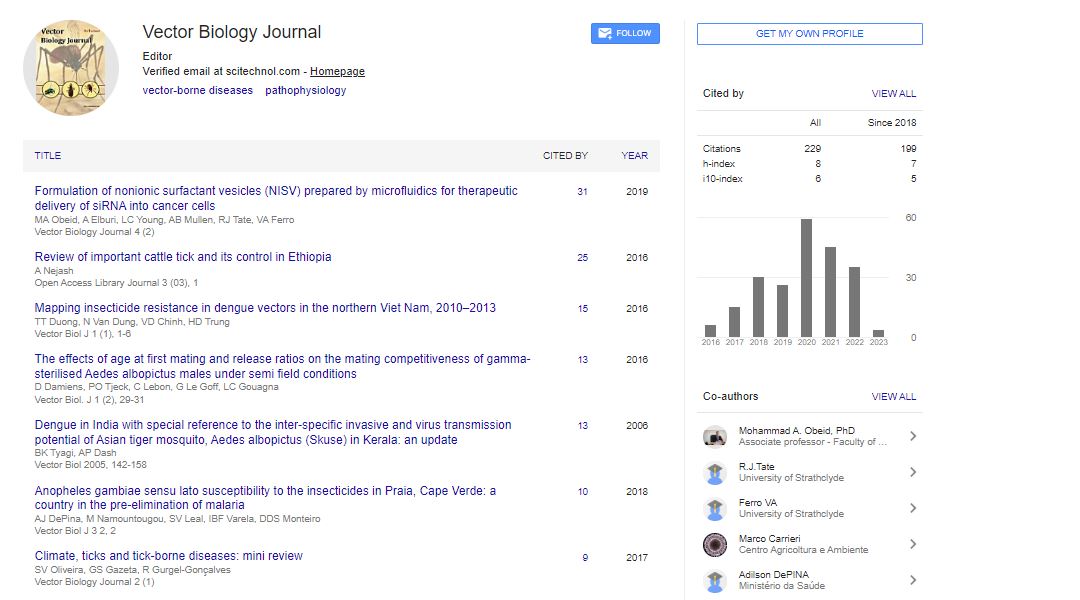Measurement of health related quality of life HRQL using EQ-5D in patients with type2 diabetes mellitus in eastern province in Saudi Arabia
Dhfer Alshayban and Royes Joseph
Imam Abdulrahman Bin Faisl University, Saudi Arabia
: Vector Biol J
Abstract
The present study used EQ5D to measure HRQL in patients with type 2 diabetes using EQ-5D. We examined the relationship between the demographic variables and health status. The study was done in King Fahad University hospital. The respondents were interviewed in Arabic. To measure HRQoL, we used the EQ-5D-5L, which consists of five dimensions that are further divided into five levels of severity.. Five-digit codes for the HRQoL of each patient are obtained from the score digits; there are 3125 possible sets of values, called health states, for EQ-5D-5L. Among the 189 participants, half of them were male, 79% were older than 50 years, more than 50% had education of high school or more, and more than half of them had monthly income of 5000sar or more. Among the respondents, 88%, 51%, 50%, 43% and 31% were agreed as having no problem in terms of self-care, anxiety or depression, usual activities, mobility, and pain or discomfort respectively. In combined, onefifth (38/184) of patients had no problem in any domains of EQ-5D half of participants (95/184) reported as having problems in some domains but not worse than moderate health in any domains (called slight-moderate health state); and the remaining 28% reported as having problems worse than moderate health in some domains The median EQ-5D index was 0.808 (0.647 – 0.937). The adjusted odds ratio for gender indicates that the odds of having perfect health state among females was 87% lower than that among males (p-value<0.001). Similarly, the odds of having perfect health state among patients with RBG >300 and RBG in between 200 and 300 were 92% (p-value=0.033) and 84% (p-value=0.002), respectively, lower than that among patients with RBG<200. In addition, patients with more than one comorbid conditions (adjusted OR=0.33) and patients with monthly income in between 5000 to 10000 (adjusted OR=3.04) also showed an association, but not statistically significant at 5% level, with the health state.
Biography
E-mail: dmalshayban@iau.adu.sa
 Spanish
Spanish  Chinese
Chinese  Russian
Russian  German
German  French
French  Japanese
Japanese  Portuguese
Portuguese  Hindi
Hindi 